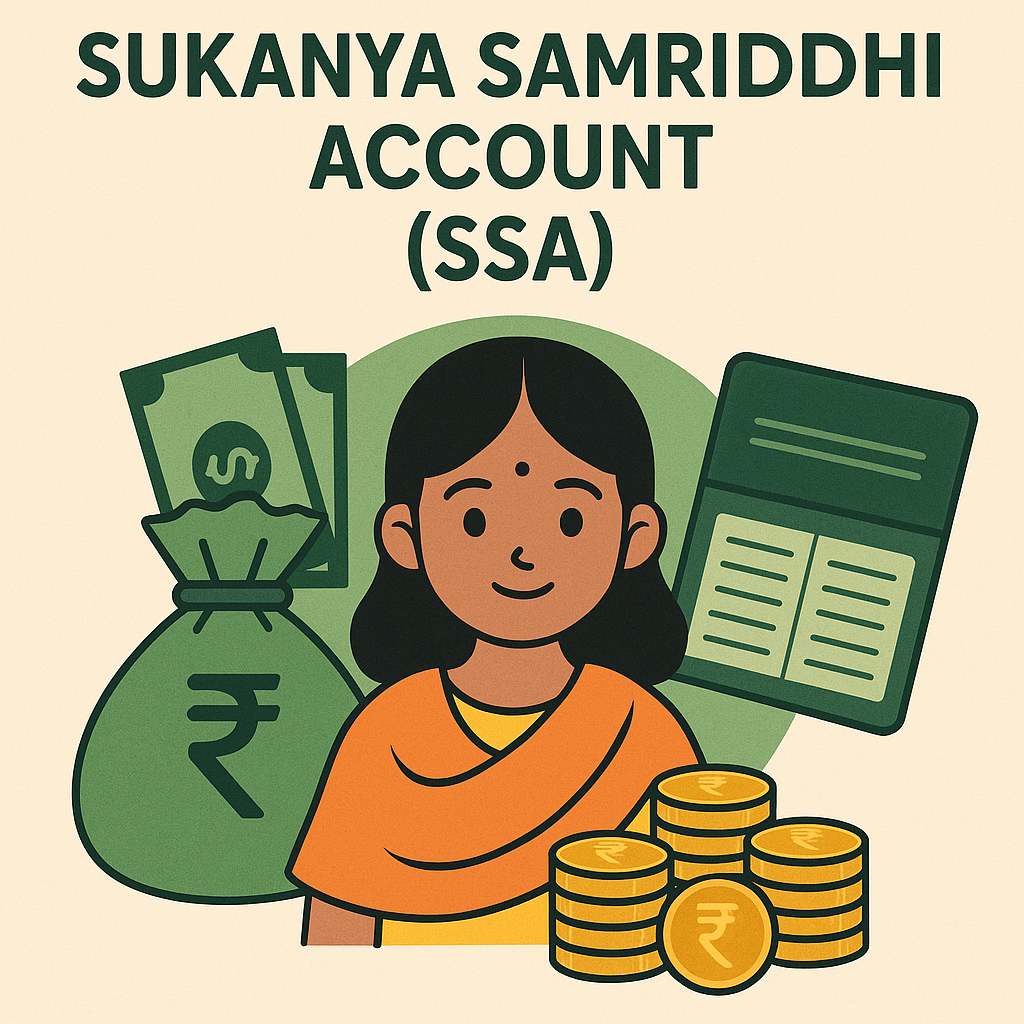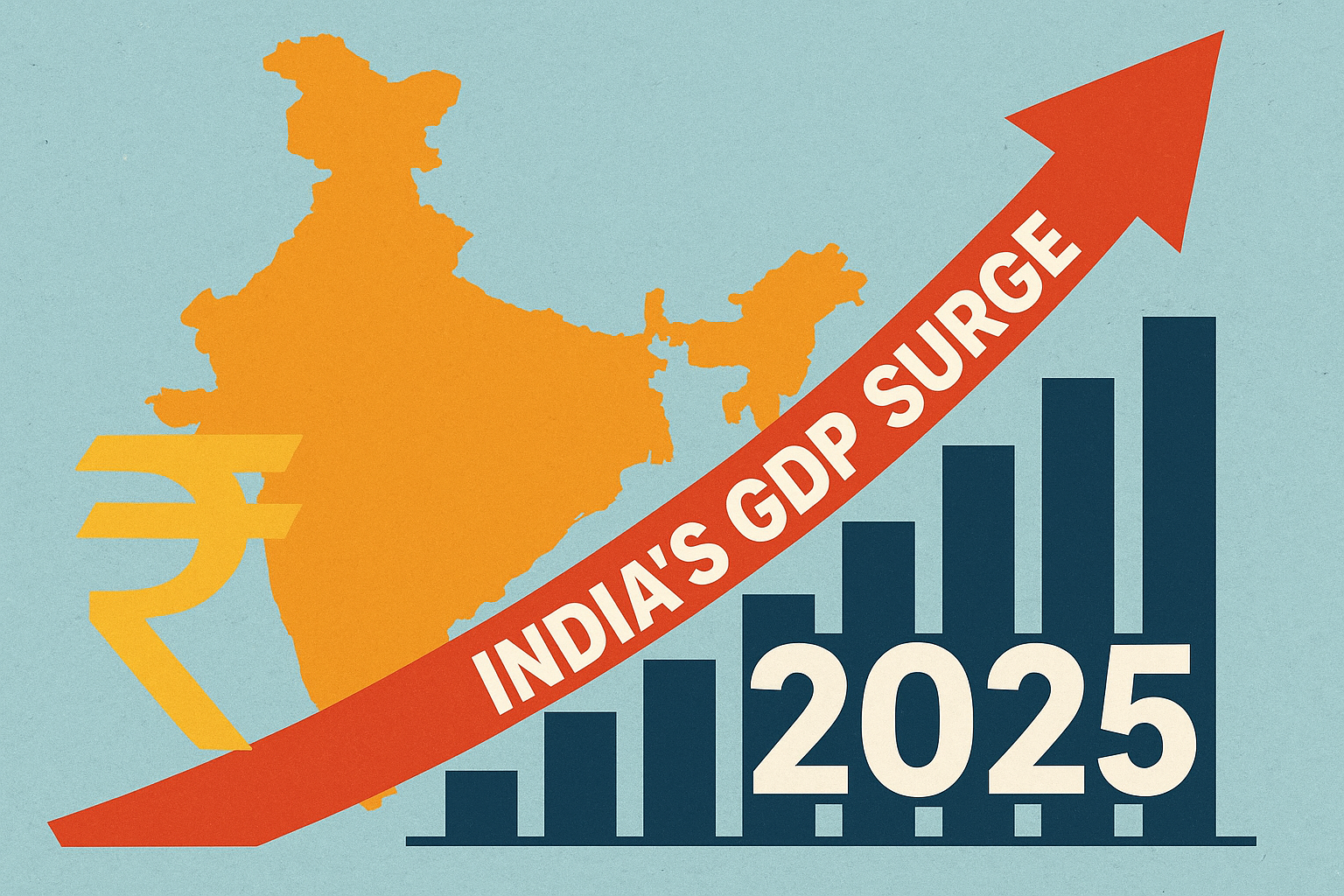Why do lakhs trust these old-school schemes in 2025? Because smart never goes out of style, find out which post office savings scheme gives the best returns.
Ask around, and chances are someone in your family has invested in a Post Office Savings Scheme. Simple, steady, and trusted for a reason. These schemes are quietly helping crores of Indians grow their money over a long time. Just look at the numbers, by March 31, 2025, over 4.24 crore Sukanya Samriddhi Accounts had been opened, with total savings soaring past ₹2.99 lakh crore. That’s more than just impressive, it’s proof of a system that people genuinely believe in. Be it NSC, KVP, PPF or more, this blog discusses the top-performing Post office schemes in India you should know about. So, let’s dig in!
What are Post Office Savings Schemes
Post Office Savings Schemes are a collection of small savings instruments and financial products offered by the Government of India through its extensive network of Post Offices across the country. These schemes are designed to provide secure, government-backed investment strategies for individuals, encouraging thrift and enabling them to achieve various financial goals. They are part of the larger National Small Savings Fund (NSSF), managed by the Ministry of Finance, which pools these deposits and utilizes them for public development.
Top 5 Post Office Investment Schemes in India 2025

If steady growth and safety define your investment goals, these post office savings schemes tick all the boxes for the best Indian investment strategy. Let’s read about the most popular ones below:
- Kisan Vikas Patra (KVP)
Kisan Vikas Patra (KVP) was initially launched in 1988 and relaunched in 2014. It is a fixed-return savings option that doubles your investment over time. The scheme is government administered and available at post offices, it’s a hassle-free way to grow your money with no market risk. Some of its key features include:
- Minimum investment of ₹1,000; no upper limit.
- You can invest in amounts like ₹1,000, ₹5,000, ₹10,000, or ₹50,000, based on your comfort.
- A low-risk instrument designed to double the invested amount upon maturity.
- The account can be opened individually or shared among up to three adults.
- Nominees can be added to the account to ensure smooth transfer of funds.
- KVP certificates can be pledged to secure loans from banks and financial institutions.
- Premature withdrawal is permitted after 2.5 years under specific conditions (e.g., death of a holder, court order).
- PAN is mandatory for investments above ₹50,000, and income proof for ₹10 lakh and above. Aadhaar is mandatory for identity.
Current Interest Rate:
- For the July to September quarter of FY 2025–26, KVP carries an annual interest rate of 7.5%, compounded yearly.
- Money will double in 9 years and 7 months, or exactly 115 months, at the current interest rate.
Taxation:
- The KVP scheme does not accompany any income tax relief under Section 80C.
- No TDS is deducted when your investment matures.
- The interest you earn is taxable and needs to be reported under ‘Income from Other Sources’ in your tax return.
- It is exempt from Wealth Tax.
- Public Provident Fund Account (PPF)
Launched in 1968, PPF is suitable for setting aside money you don’t intend to use in the near term. With steady returns and tax savings, it’s a go-to option for anyone planning ahead. Here’s a quick look at the main highlights of this scheme:
- Each individual is allowed only one account, which may be opened by an adult resident or by a guardian for a minor or someone mentally incapacitated.
- Min deposit: ₹500/year; Max: ₹1.5 lakh/year.
- Deposits via lump sum or up to 12 installments (cash/cheque/DD/online).
- Account is discontinued if ₹500 is not deposited annually; revival requires ₹50/year penalty plus dues.
- Interest is calculated monthly (based on balance between 5th and month-end) and credited annually.
- Loans facility accessible between the 3rd and 6th year of your investment.
- Max loan: 25% of 2nd preceding year’s balance.
- Loan interest: 1% p.a. (6% if not repaid in 36 months).
- Withdrawals are permitted after five financial years from the close of the opening year.
- After completing five years, you’re allowed to take out up to half the balance, calculated from either the fourth year preceding the withdrawal or the year just before it, whichever is less.
- Maturity at 15 years (excluding year of opening).
- On maturity, the account can be closed, kept without deposits, or extended in 5-year blocks with a form.
- Premature withdrawal is allowed after 5 years for death, higher education, or change in residency.
- 1% interest penalty applies from account opening.
- On death of the account holder, the account is closed. No further deposits allowed. Interest paid till the previous month of closure.
Current Interest Rate:
- From 1.07.2025 to 30.09.2025, the PPF interest rate is 7.1% per annum (compounded yearly).
Taxation:
- Claim deductions under Section 80C for the amount invested, which helps lower your taxable income.
- No income tax is levied on the maturity proceeds, the entire amount is completely tax-free.
- National Savings Certificates (NS)
Introduced in 1989, the National Savings Certificate (NSC) is a savings scheme that encourages disciplined, one-time investments. It offers a simple way to set aside money and receive a lump sum after a set period. The primary features of the scheme are:
- Single adults, joint holders (up to 3), or guardians for minors/persons of unsound mind. No limit on the number of accounts.
- Minimum investment limit is ₹1,000 (in ₹100 multiples); no maximum limit.
- Can be pledged to the President of India, RBI, banks, co-ops, corporations, local bodies, and housing finance firms via prescribed application.
- Maturity period is a fixed term of 5 years from the date of deposit.
- Premature closure is not permitted before maturity except in cases of death, forfeiture by pledgee, or court order.
- Before 3 years: Only principal is paid.
- After 1 year but before 3 years: Interest is paid at Post Office Savings Account rate.
- Can be transferred to another eligible person. On the death of the holder(s), the account is transferred to the nominee/legal heir.
Current Interest Rate:
- From 1.07.2025 to 30.09.2025, 7.7% p.a., compounded annually. (₹10,000 becomes ₹14,490 in 5 years.)
Tax Benefits:
- Deposits qualify for Section 80C deduction.
- Interest accrued annually is treated as reinvested and also eligible for 80C.
- Final year’s interest is taxable (not reinvested).
- Sukanya Samriddhi Account (SSA)

Made available in 2015 by PM Narendra Modi, Sukanya Samriddhi Account (SSA) is a savings scheme created to support the financial future of a girl child. Meant for her education and marriage expenses, it offers high interest and tax-free returns, making long-term saving easier. The essential details of the scheme are as follows:
- One account per girl child under 10 years. Max two accounts per family (exception for twins/triplets). Guardians can open this account at designated post offices or banks.
- Minimum initial deposit limit is ₹250. Annual minimum is ₹250. Annual maximum is ₹1.5 lakh (in ₹50 multiples). Deposits allowed for 15 years (lump sum or installments)
- If minimum not deposited, account defaults. Can be revived within 15 years by paying ₹50 penalty + minimum deposit per missed year.
- The account stays in the guardian’s name and control until the girl turns 18.
- Withdrawals of up to 50% of the previous year’s balance allowed after age 18 or after 10th standard. Withdrawals allowed in lump sum or yearly (max 5 years), as per actual fees.
- Premature closure is allowed after 5 years in cases of death (interest till death at savings rate), serious illness (girl/guardian), or by court order.
- Matures 21 years from account opening or upon marriage after 18. Closure is not allowed 1 month before or 3 months after marriage.
Current Interest Rate:
- From 1.07.2025 to 30.09.2025, interest rate is 8.2% p.a. (compounded annually)
- Calculated monthly on lowest balance between 5th and month-end; credited annually.
Tax Benefits:
- Deposits qualify under Section 80C.
- Interest earned and maturity amount are tax-free.
- Senior Citizens Savings Scheme Account (SCSS)
Made available in 2004, the Senior Citizens Savings Scheme (SCSS) is a state-funded initiative exclusively for those aged 60 and older. It offers secure, quarterly interest payouts and tax benefits, making it ideal for post-retirement income.
- Eligibility is for individuals aged 60+.
- Retired civilian employees (55–60 years), if invested within 1 month of retirement benefits.
- Retired Defense Employees (50–60 years), under the same timeline
- Single or joint with spouse (entire deposit belongs to the first holder)
- Minimum investment is ₹1,000 (multiples of ₹1,000) investment. Maximum is ₹30 lakh across all SCSS accounts.
- Matures in 5 years. Extendable for 3 more years (form to be submitted within 1 year of maturity). Extended accounts earn interest as per prevailing rate at time of extension.
- Interest after death is paid at PO Savings Account rate. If spouse is joint holder/nominee and eligible, account can continue till maturity
- Premature closure is allowed anytime.
- Before 1 year: No interest + recovery of paid interest
- After 1 but before 2 years: 1.5% deducted
- After 2 but before 5 years: 1% deducted.
Current Interest Rate:
- From 1.07.2025 to 30.09.2025, 8.2% p.a., paid quarterly: 1st April, July, October, January
- No interest on unclaimed payouts.
- Can be auto-credited to PO Savings or ECS
- ₹10,000 earns ₹205 every quarter
Tax Benefits:
- Investment eligible under Section 80C
- Interest taxable if total interest exceeds ₹50,000/year
- TDS applies unless Form 15G/15H is submitted and limits aren’t crossed
Conclusion
Each post office saving scheme has its own benefits, some help you save on taxes, some give steady returns, and others are great for long-term goals.
If you’re still confused which one to choose, it’s a good idea to check with a financial advisor to find the right scheme for your needs.
- Make in India 2.0: How Manufacturing Is Reshaping Market Sentiment - December 13, 2025
- Real Estate Boom : Why Tier-2 Cities Are Attracting Big Investors - December 12, 2025
- India’s GDP Surge 2025: What the New Growth Numbers Mean for Markets - December 9, 2025





